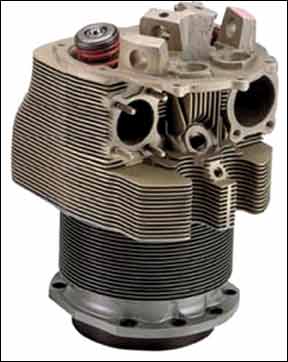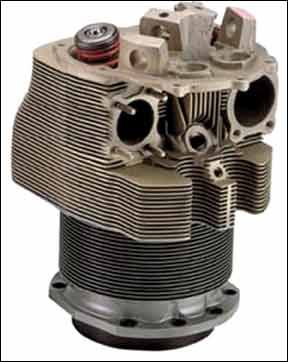Cessna 208B Grand Caravan
Cracked Elevator Pulley Support
The left pulley support (p/n 2613083-1) web below the floor at FS 120.0 and butt line 10.0 cracked, from the left elevator bell crank mount bolt access hole to the end of the web.
Part Total Time: 12,853.3 hours

288
Cessna 335
Corroded Wing Attach Fittings
During inspection, the forward upper l/h wing attach point was found to have corrosion on the wing attach fitting (p/n 08113507). After removing the upper wing-fuselage fairing, inspection revealed intergranular corrosion on the fitting, and severe rust on the mounting bolt heads. The fitting was replaced due to the severity of the corrosion. Probable cause of this corrosion is the fuselage-wing fairing not being sealed properly in the area above the fitting.
Part Total Time: 5559.0 hours
Piper PA-44-180 Seminole
Cracked Nacelle Angles
Inspection found a crack in the nacelle angle. Upon further investigation, the crack was found to run between the two rivets that extend through the wing skin into the cap (p/n: 67097-002 or -003) which is attached to a web (p/n 67079-000/001). This web is where the main gear aft attach point is mounted. Fatigue is the suspected cause.
Part Total Time: 6210.0 hours
Continental TSIO-520C
Catastrophic Engine Failure
This aircraft engine had 35 hours since overhaul. Post-failure inspection revealed extremely high temperatures: crankshaft journals melted, stretched valves and discoloration in the rods and cylinders. The exact cause is undetermined. Engine was installed in a Cessna TU-206F.
Part Total Time: 35.0 hours
ECI Cylinders TISN712BCA
Failed Valve Guides
Six new Engine Components, Inc. (ECI) cylinders were installed on the Continental GTSIO-520-H engine powering a Cessna T210L at 2812 hours total time. Three of the six cylinders experienced valve guide failures at 384 hours time in service. All three failed valve guides broke off at the insert point and one completely disintegrated—contaminating the engine with metal debris.
The only initial, abnormal indication noted from the broken exhaust valve guides was excessive engine oil blowing through the engine crankcase breather. The engine operated normally with no apparent power loss or abnormal indications of EGT, TIT or oil pressure/temperature.
Part Total Time: 384 hours




